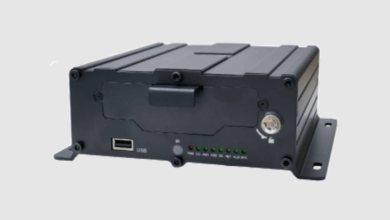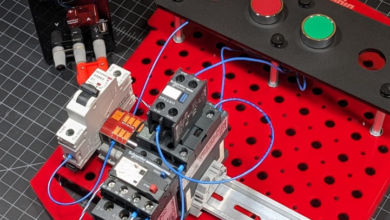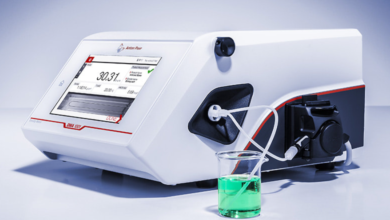Rupture Disk Valve Works

Introduction to Rupture Disk Valves
Industrial systems often operate under high pressure, making safety mechanisms crucial for protecting equipment and personnel. One of the most effective tools for overpressure protection is the rupture disk valve. These devices act as fail-safe components designed to release pressure rapidly when system conditions exceed safe limits.
Rupture disk valves are widely used across industries such as chemical processing, power generation, and automated systems like roller shade motor applications. Their simple yet reliable operation makes them an essential part of any comprehensive safety plan.
How a Rupture Disk Valve Works
A rupture disk valve consists of a thin, pre-stressed diaphragm or membrane integrated into a valve body. When pressure builds beyond a predetermined threshold, the diaphragm bursts, opening the valve and releasing excess pressure safely. Unlike mechanical relief valves, rupture disk valves have no moving parts in the rupture disk valve diaphragm area, reducing the chance of mechanical failure.
The instantaneous response of the rupture disk valve ensures that overpressure events are mitigated immediately, preventing damage to sensitive equipment or hazardous leaks. After activation, the valve must be inspected and the disk replaced to restore protection.
Key Features of Rupture Disk Valves
Instantaneous Pressure Relief
Rupture disk valves respond quickly to excessive pressure, making them ideal for protecting high-risk systems where even short delays can lead to failures.
Simplified Design
The absence of moving components reduces maintenance requirements and improves reliability, making these valves a preferred choice for critical applications.
High Pressure and Temperature Tolerance
Depending on the material, rupture disk valves can withstand extreme pressures and temperatures, offering versatility in different industrial environments.
Corrosion Resistance
Manufacturers provide rupture disk valves in corrosion-resistant materials such as stainless steel, Hastelloy, or nickel alloys, ensuring longevity even when exposed to aggressive media.
Types of Rupture Disk Valves
Forward-Acting Valves
Forward-acting rupture disk valves open when internal pressure pushes against the diaphragm. These valves provide full-flow relief and are common in pipelines and storage tanks.
Reverse-Acting Valves
Designed to resist backpressure, reverse-acting rupture disk valves only operate when forward pressure exceeds the set limit. They are often used in systems with fluctuating backpressure.
Scored and Slit Disk Valves
Scored or slit rupture disks have patterns or cuts that control the rupture path, ensuring predictable and safe bursting. This design minimizes the risk of uncontrolled pressure release.
Applications of Rupture Disk Valves
Chemical Industry
In chemical processing plants, rupture disk valves protect reactors, pipelines, and storage vessels from unexpected pressure surges. By preventing equipment failure, they help avoid costly shutdowns and hazardous incidents.
Pharmaceutical and Food Production
Sterile production environments require precise pressure management. Rupture disk valves ensure safe release of overpressure while maintaining hygienic standards in sensitive processes.
Power Generation
Rupture disk valves play a vital role in power plants, protecting turbines, boilers, and piping systems from pressure spikes that could lead to equipment damage or operational interruptions.
Roller Shade Motor Systems
Even in motorized systems such as roller shade applications, these valves are integrated to maintain safety when pressure accumulates within control units or hydraulic actuators.
Laboratory and Research Equipment
Small-scale vessels and laboratory systems benefit from rupture disk valves to prevent accidents in experimental setups involving high-pressure reactions.
See also: High-Voltage Motor Wiring Diagram: Understanding and Implementation
Advantages of Using Rupture Disk Valves
Enhanced Safety
The primary benefit of rupture disk valves is the protection they provide against overpressure events. Their rapid response ensures the safety of both personnel and equipment.
Minimal Maintenance
Due to their simple construction, rupture disk valves require less frequent maintenance compared to mechanical pressure relief devices.
Versatile Material Options
Manufacturers offer rupture disk valves in a wide range of materials to handle corrosive chemicals, extreme temperatures, or high-pressure conditions.
Cost-Effective Solution
Compared to complex safety systems, rupture disk valves provide a reliable, economical method for overpressure protection.
Choosing the Right Rupture Disk Valve
Pressure Rating
Select a valve with a burst pressure slightly above the normal operating pressure but below the maximum allowable pressure of the system.
Material Selection
Choose materials compatible with the process media and operating environment, ensuring long-term reliability and safety.
Flow Capacity
Ensure the valve can relieve sufficient pressure flow to protect the system during a rupture event.
Installation Considerations
Proper orientation, alignment, and compatibility with system flanges are essential for effective operation.
Installation and Maintenance Guidelines
Proper Installation
Follow manufacturer instructions carefully to ensure the rupture disk valve functions as intended. Incorrect installation can result in premature rupture or failure to relieve pressure.
Regular Inspection
Check the valve periodically for corrosion, wear, or mechanical damage to maintain its effectiveness.
Replacement After Rupture
Once a rupture disk valve activates, the disk must be replaced immediately to restore safety. Keeping spare disks on hand helps minimize downtime.
Compliance and Standards
Rupture disk valves conform to international standards such as ASME, ISO, and API. Certified valves ensure predictable performance and regulatory compliance, making them suitable for critical industrial applications.
Emerging Trends
Advanced Materials
New materials improve corrosion resistance, high-temperature performance, and longevity of rupture disk valves.
Smart Monitoring Integration
Pressure sensors and monitoring systems can be integrated with rupture disk valves to provide real-time alerts and predictive maintenance data.
Environmentally Friendly Designs
Manufacturers are focusing on recyclable materials and eco-conscious production methods to reduce environmental impact.
Conclusion
Rupture disk valves are essential components in any safety-conscious industrial setup. They offer fast, reliable, and economical protection against overpressure scenarios. Understanding their operation, selecting the right materials, and maintaining proper installation ensures maximum safety. From large industrial systems to motorized roller shade applications, these valves continue to play a critical role in safeguarding both equipment and personnel.




